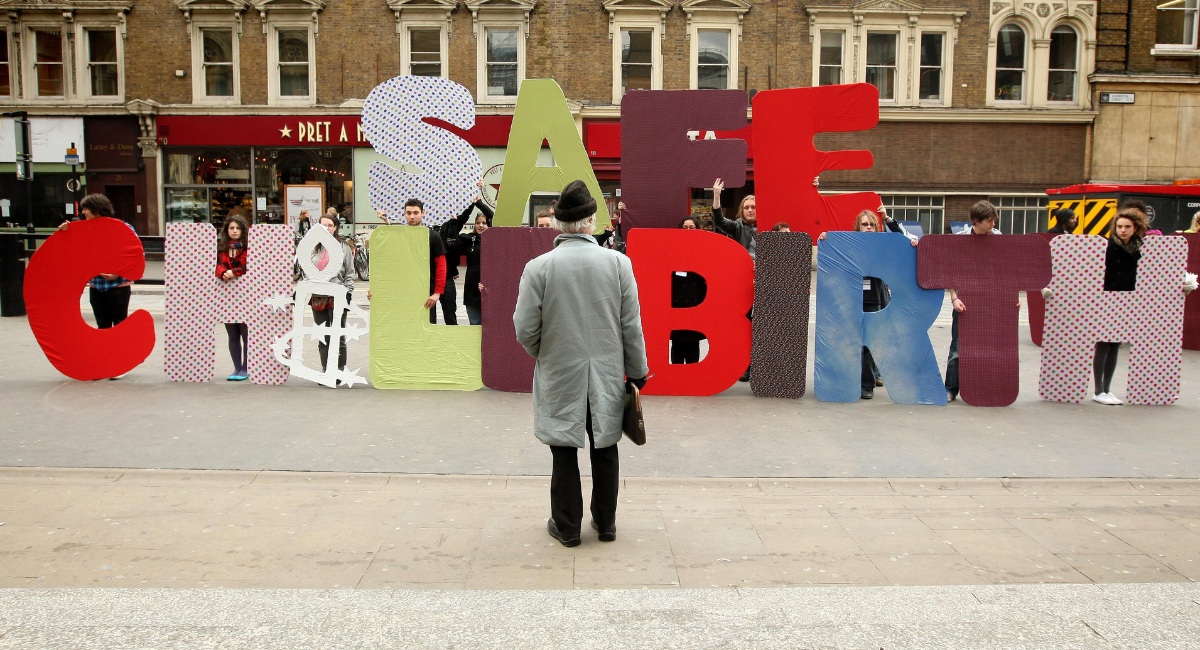The pro-life movement has long grasped the necessity of caring for both mothers and their babies, born or preborn. Maternal mortality deaths, meaning pregnancy-related maternal deaths up to one year after birth, are massively preventable, rob children of their mothers, and devastate families — and thus should concern every pro-lifer.
Live Action News has repeatedly highlighted the ways that increased access to doula care can help improve outcomes for America’s mothers and their babies via decreased rates of cesarean-sections, decreased use of pain medication, fewer preterm births, higher birth weights, increased rates of breastfeeding, and more. Culturally sensitive doula care is especially impactful for Black and Indigenous women, who are at the highest risk of experiencing maternal mortality. And despite claims to the contrary, legalized abortion is no solution to the maternal mortality crisis, and may exacerbate it. There’s still another piece to the puzzle: midwifery care.
What is a midwife?
In an article for Verily, doula and certified lactation consultant Cassondra Moriarty summarized humorously, “A midwife is not a witch doctor, does not have to be a hippie, doesn’t necessarily carry crystals, and doesn’t hate your OB-GYN.” Moriarty interviewed retired doctor of midwifery Karen Jefferson, who explained, “Midwives provide relationship-based health care in the context of the perinatal cycle. They are specialists in physiologic birth.” Midwives are best known for caring for women during pregnancy, labor, birth, and postpartum. But they also provide well-woman care from a girl’s first period through menopause.
Moriarty clarified the three types of midwives practicing in the United States today: certified nurse midwives, certified midwives, and certified professional midwives. Certified Nurse Midwives (CNM) are licensed by the American Midwifery Certification Board (AMCB) and can practice in any state. Certified Midwives (CM) take the same licensing exam as CNMs, but are limited to practicing in just a few states. The North American Registry of Midwives (NARM) certifies Certified Professional Midwives (CPM), and licenses are issued by the state in which CPMs practice. However, CPMs undergo significantly less training than CNMs and CMs, typically holding only a high school diploma.
A midwife is not a doula. A doula is a trained support person who emotionally and/or physically supports moms and their partners or families. Doulas do not have medical training, though, like midwives, they care for women from pregnancy through postpartum and are well-versed in normal, physiologic birth. Like midwives, they view pregnancy as a natural occurrence, not as an illness or a problem to be managed.
How midwifery care could help maternal and fetal health
In an editorial for The Commonwealth Fund, P Mimi Niles, a Certified Nurse Midwife and Assistant Professor at New York University’s Rory Meyers College of Nursing, explored the pivotal role midwives can play in ending the maternal mortality crisis in our country. She wrote, “Research consistently demonstrates that when midwives play a central role in the provision of maternal care, patients are more satisfied, clinical outcomes for parents and infants improve, and costs decrease. Use of midwives is also associated with fewer cesarean sections, lower preterm birth rates, lower episiotomy rates, higher breastfeeding rates, and a greater sense of respect and autonomy for the patient.”
Niles cited a recent analysis by the World Health Organization, which suggested that “a midwife workforce, integrated into health care delivery systems, could provide 80 percent of essential maternal care around the world and potentially avert 41 percent of maternal deaths, 39 percent of neonatal deaths, and 26 percent of stillbirths.”
Moriarty summed up the results of the federally-funded five-year, multi-site Strong Start for Mothers and Newborns initiative, which found that women who gave birth in birth centers under the care of midwives “had babies who were 26 percent less likely to be born preterm. The mothers themselves had a 40 percent lower cesarean rate, were twice as likely to have a successful vaginal birth after Cesarean (VBAC), and had 21 percent lower childbirth costs.”
Dr. Ingrid Skop explained that abortion, on the other hand, does not help the maternal mortality rate, but can cause women harm. “It is time for the American people to become aware that abortion does not protect a woman from maternal mortality,” she wrote. “In the many ways documented here, it raises her risk of death. It can cause immediate physical complications due to poor quality abortionists, long-term mental health consequences, and even increase risk of preterm delivery and abnormal arrangement of the placenta in subsequent pregnancies. Maternal mortality must no longer be dishonestly used as a reason to justify abortion.”








